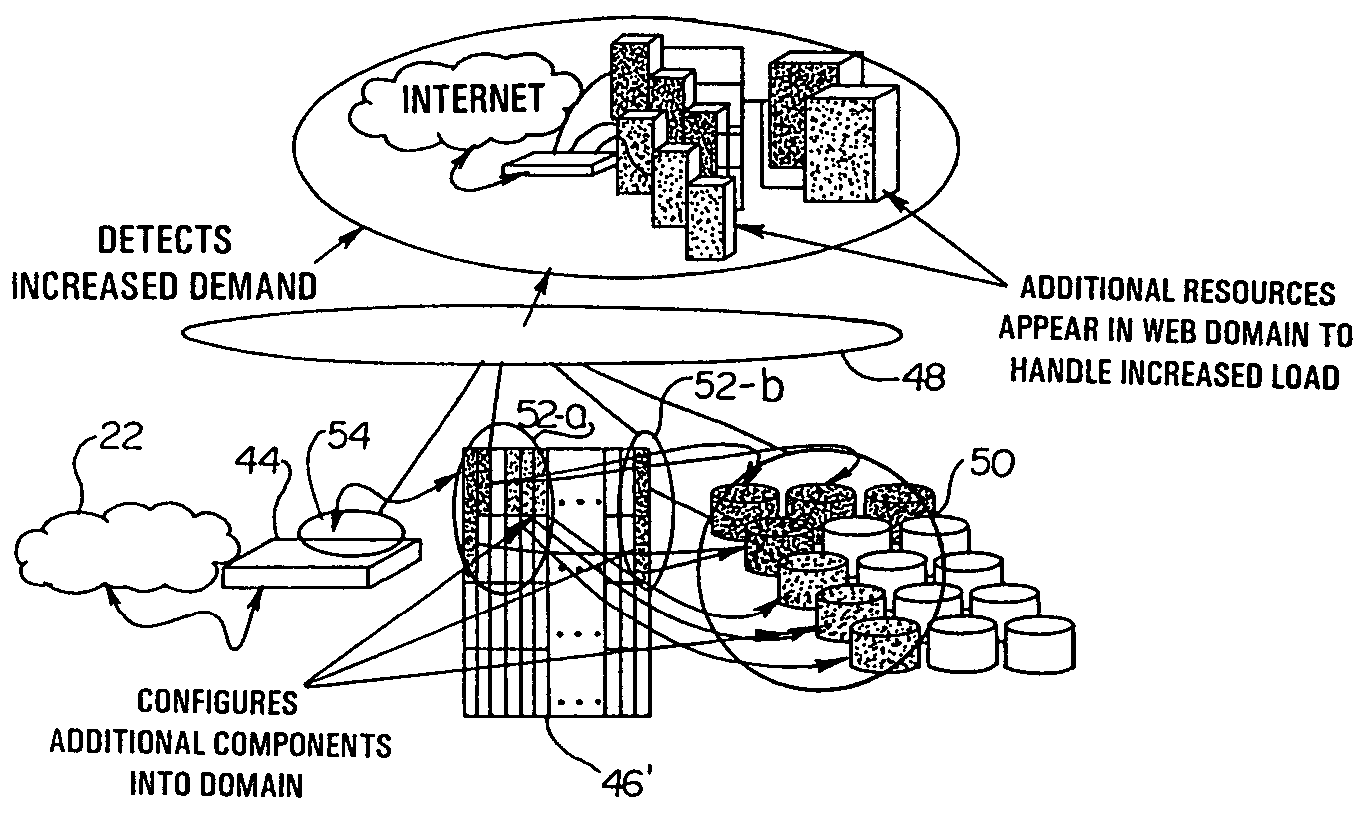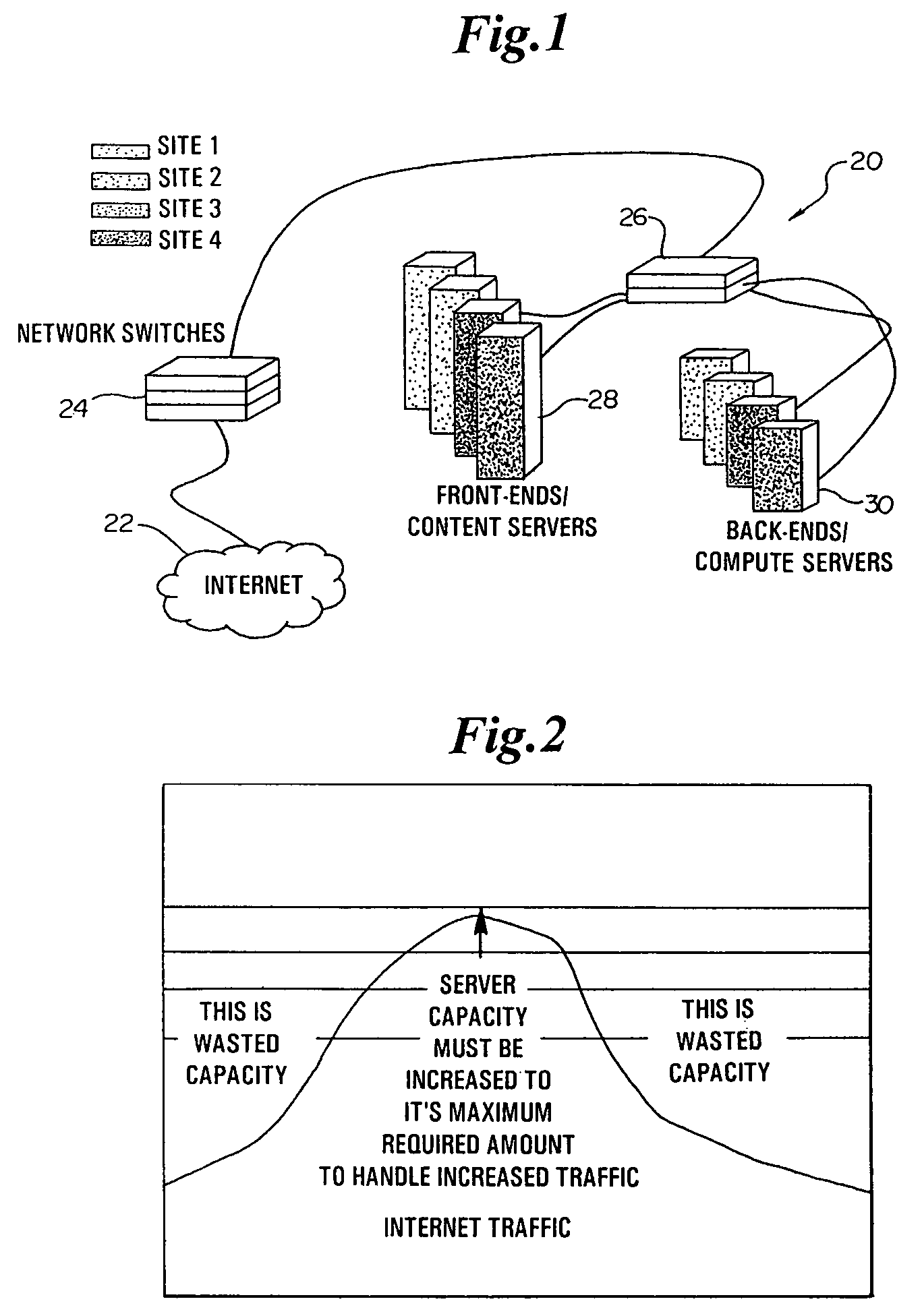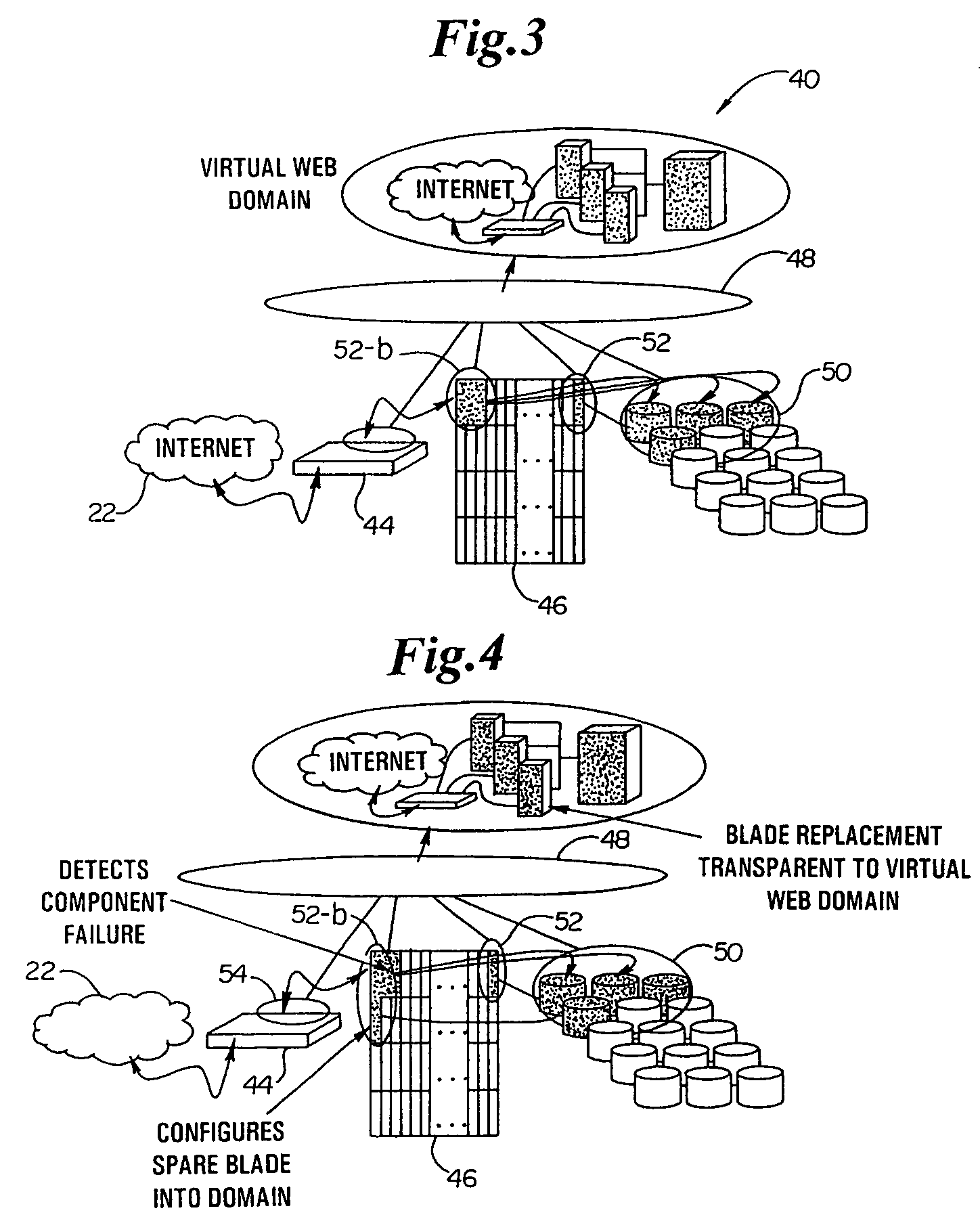Method and system for providing dynamic hosted service management across disparate accounts/sites
a hosted service and management system technology, applied in the field of data processing business practices, can solve the problems of increasing complexity and support challenges associated with maintaining multiple server platforms, unable to meet the needs of customers, etc., to achieve more economical and flexible server farm arrangements.
- Summary
- Abstract
- Description
- Claims
- Application Information
AI Technical Summary
Benefits of technology
Problems solved by technology
Method used
Image
Examples
Embodiment Construction
[0039]Referring to FIG. 1, a simplified functional view of an existing server farm 20 for a hosted service provider is shown. Such server farms are normally constructed using off-the-shelf hardware and software components statically configured to support the hosted service requirements of a given customer account. In this embodiment, the server farm 20 for the hosted server provider is supporting hosted services for four different customer accounts. The server farm 20 is connected to the Internet 22 by network switches / routers 24. The network switches 24 are in turn connected to internal network switches / routers 26 that form an intranet among the front-end / content servers 28 and back-end / compute servers 30 for a given customer account. All front-end / content servers 28 and back-end / compute servers 30 are connected to disk systems 32 containing data and software unique to that customer account. Depending upon the physical nature of the hardware for the servers 28, 30, the disk systems...
PUM
 Login to View More
Login to View More Abstract
Description
Claims
Application Information
 Login to View More
Login to View More - R&D
- Intellectual Property
- Life Sciences
- Materials
- Tech Scout
- Unparalleled Data Quality
- Higher Quality Content
- 60% Fewer Hallucinations
Browse by: Latest US Patents, China's latest patents, Technical Efficacy Thesaurus, Application Domain, Technology Topic, Popular Technical Reports.
© 2025 PatSnap. All rights reserved.Legal|Privacy policy|Modern Slavery Act Transparency Statement|Sitemap|About US| Contact US: help@patsnap.com



